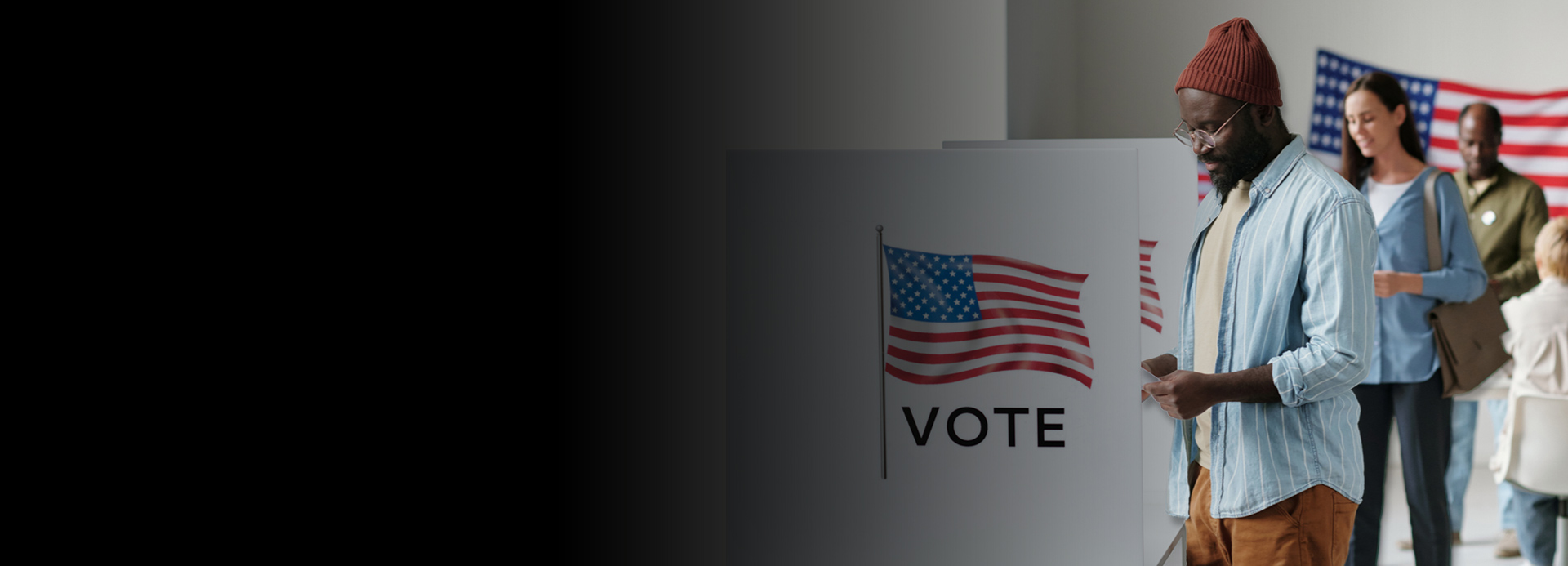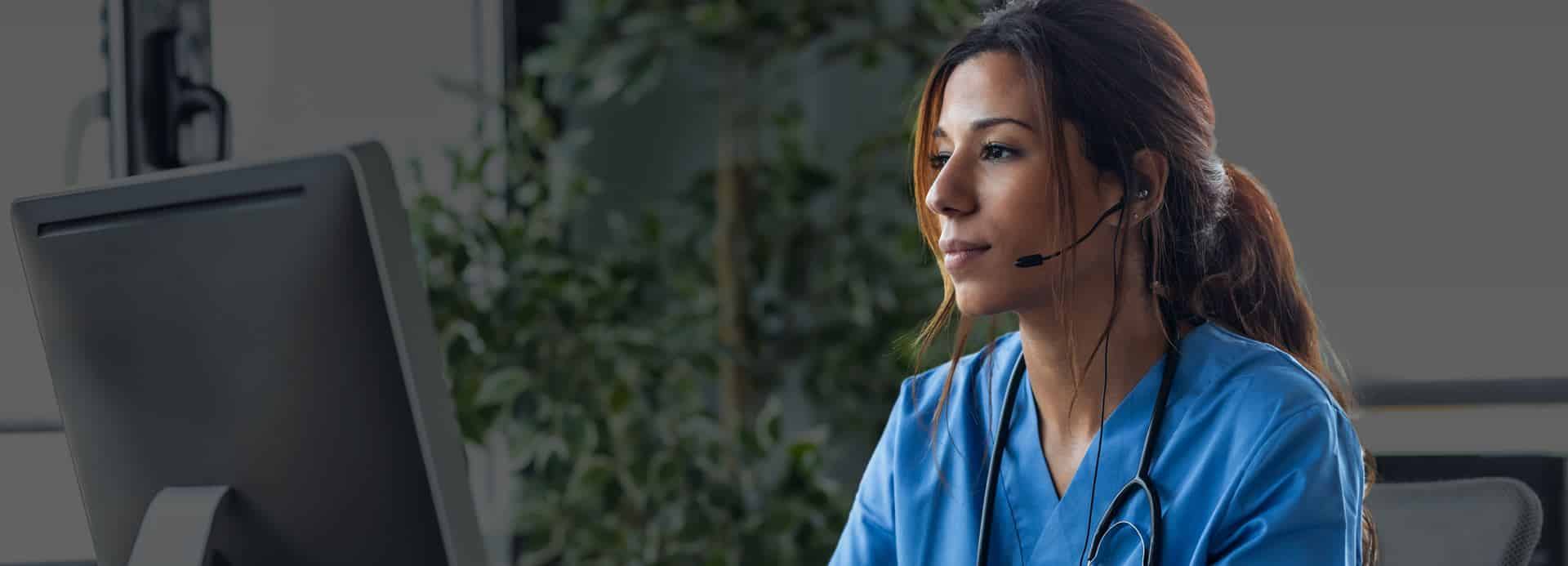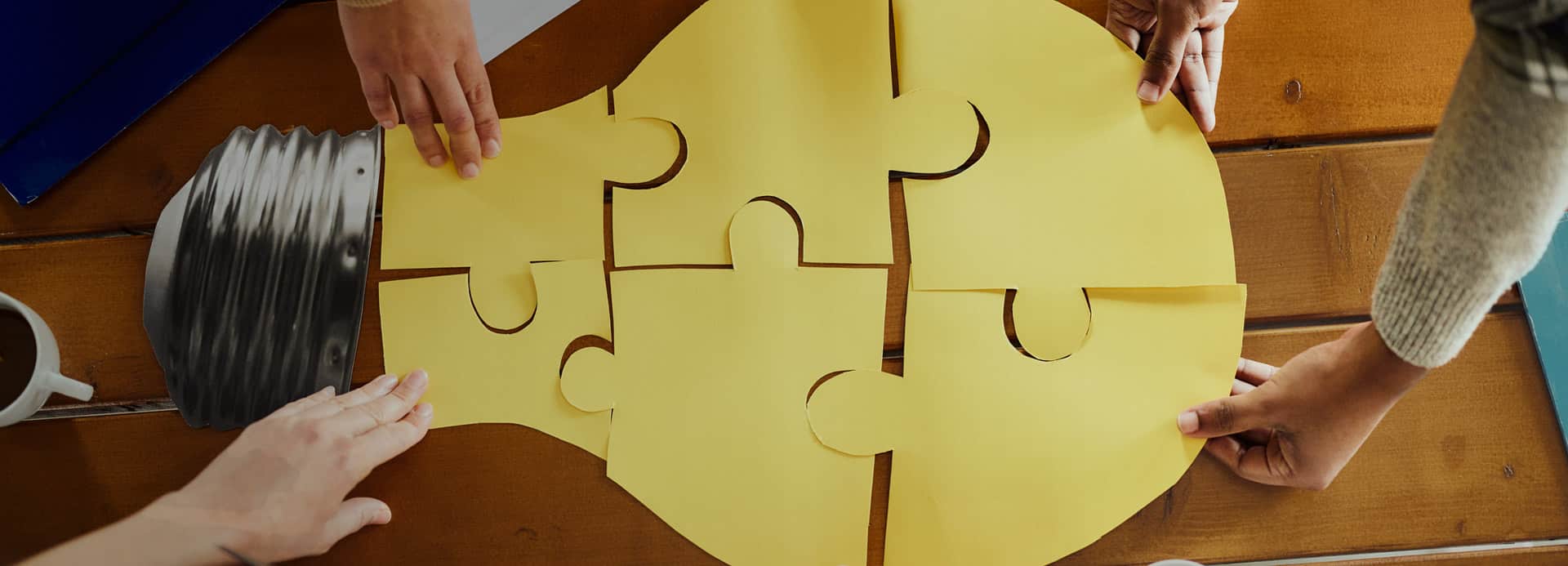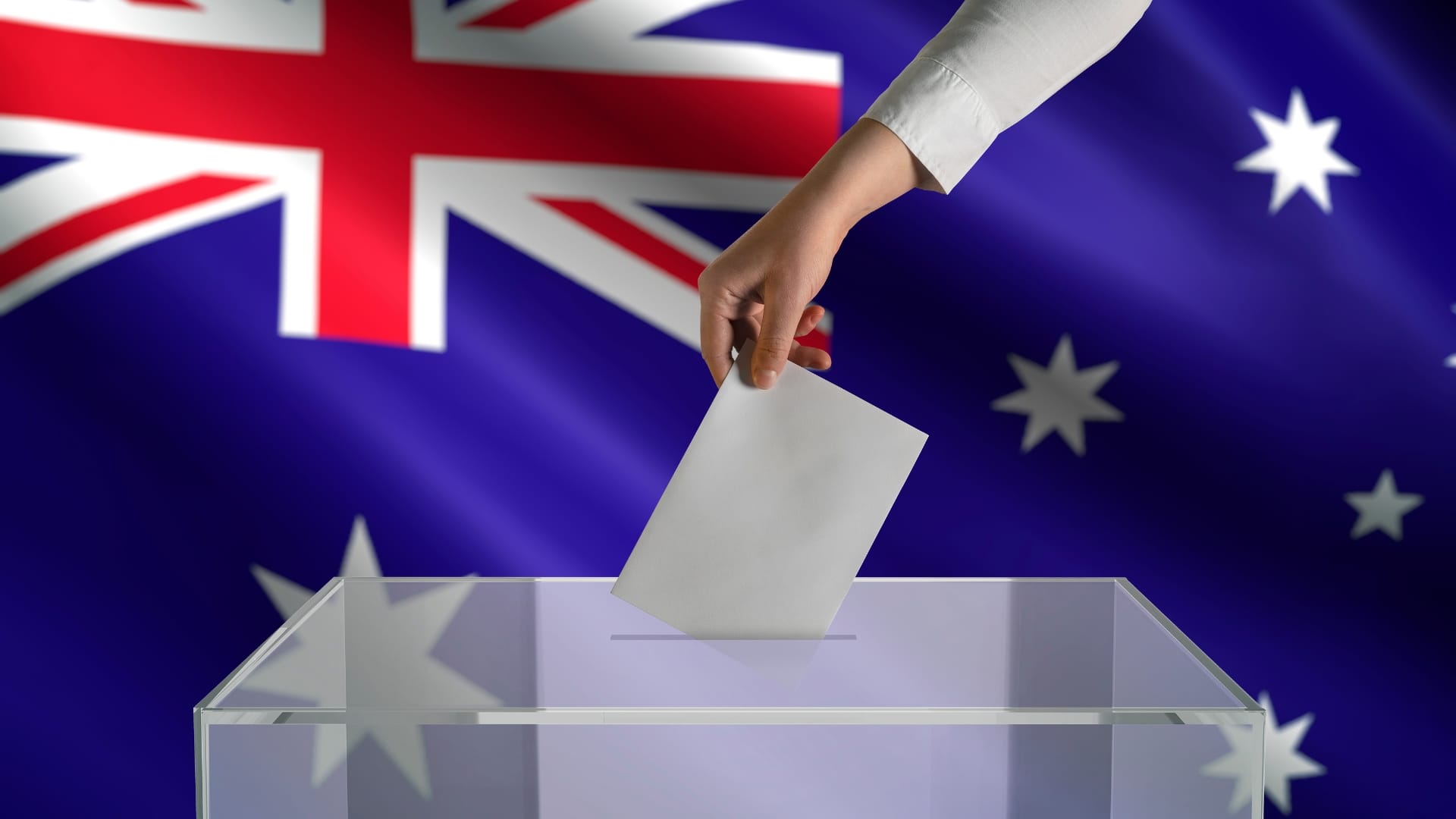Polling from the first few weeks of the campaign suggests that Albanese’s Labor Government may be able to keep hold of the reins of power, but the polling inaccuracies of 2019 tell us to beware.
Labor is leading in all major polls, but is another surprise on the cards?
As we enter the final weeks of the 2025 Australian Federal Election campaign, the latest polls show that Labor holds a narrow but consistent lead.
In the latest YouGov poll, conducted between April 4 and April 10, Albanese’s Labor has a lead of 52.5% in two-party-preferred (TPP) voting while Peter Dutton’s Coalition is at 47.5%. The trend is confirmed in the Guardian’s poll tracker which has Labor in the lead averaging between 49% and 52.5% while the Coalition trails with an average between 47.6% and 51%.
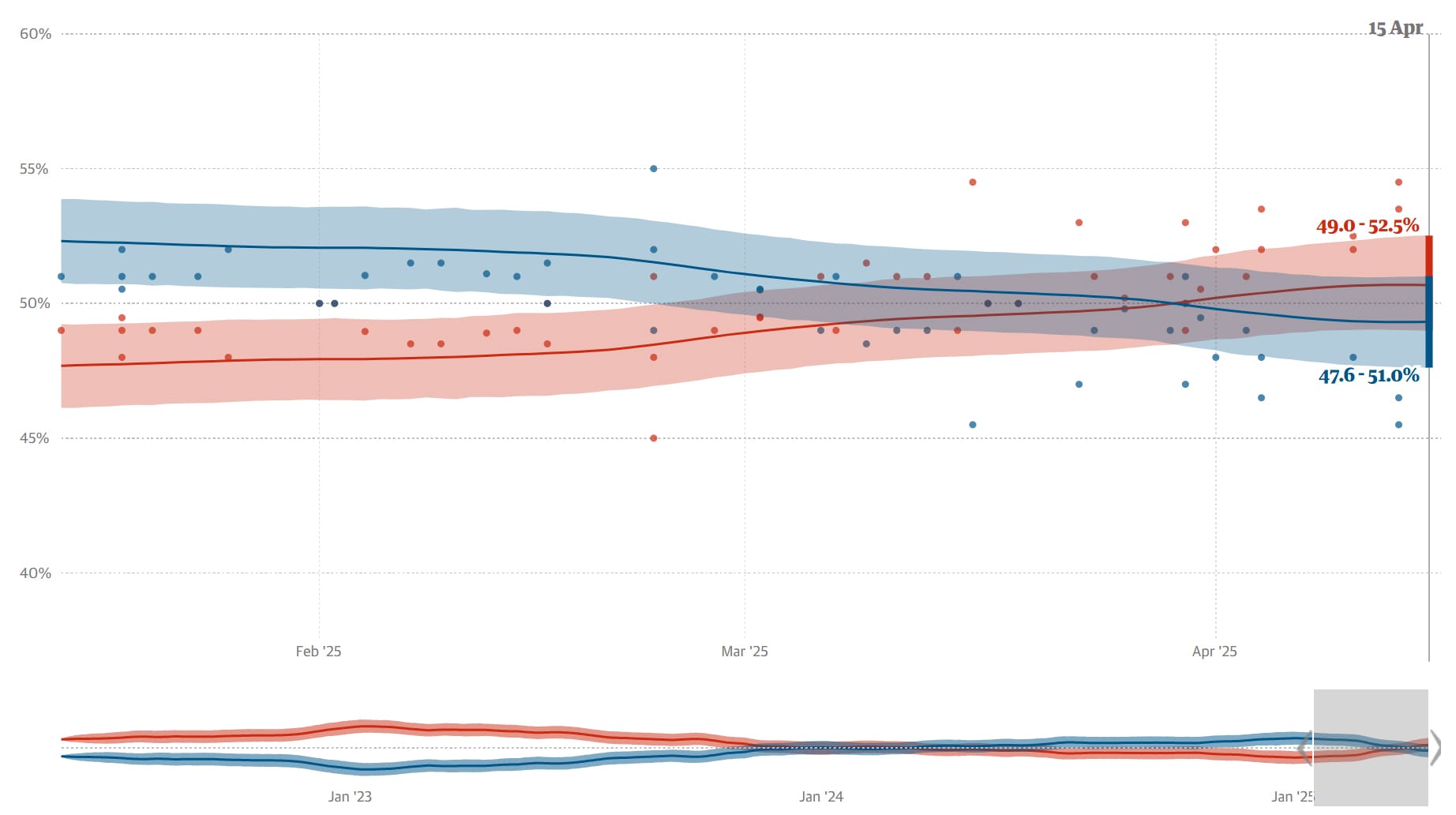
While a win for either party is comfortably within the margin of error of these polls, the trend would typically suggest a Labor win. However, pollsters still vividly remember the 2019 election when there was a consensus from all the major polls that Labor would win comfortably. Of course, Scott Morrison’s Coalition won a surprise victory that left polling strategists and analysts scratching their heads.
How polling has changed since 2019
Calling the race the wrong way in 2019 has led the polling industry to fundamentally re-evaluate its methodology for Australian elections. Across all major polls, Labor’s two-party preferred vote margin had been overstated by close to three percentage points. This turned out to be a huge deviation from their actual vote after the election. Since then, there have been a number of reforms put in place:
- Adjusted weightings: Given the over-representation of university-educated, engaged voters who had leaned toward Labor in 2019, new weightings have been introduced to eliminate this bias in polling.
- Mixed-mode polling: Polling organisations now use a broader mix of live phone interviews, online panels, SMS, and other methods to try to reach a more representative sample of voters, especially younger voters and those from regional areas who had been underrepresented in 2019.
- Transparency standards: Partly in response to the 2019 election the Australian Polling Council was created in 2020. Pollsters who have joined the council are required to disclose their methodology, sample sizes, and raw data to overcome the ‘herding’ effect (when pollsters adjust the results to be in line with the results of other polls) and improve accountability and transparency.
- More advanced modelling: While each polling organisation has its own way of doing things, all are now using sophisticated models similar to YouGov’s Multilevel Regression and Post-stratification (MRP) to predict better outcomes at the seat level, especially in marginal electorates that will decide the election.
Obtaining representative samples
It turned out that one of the major problems in 2019 was the difficulty in obtaining genuinely representative samples. Response rates sometimes as low as 10 percent only compound the difficulty of building up a picture of the total electorate. Strategies to mitigate this include:
- Stratified sampling: Targeting specific sub-groups, like outer suburban mortgage holders or rural voters, helps polls better reflect geographic and economic diversity.
- Dynamic weighting: Adjusting for factors such as age, gender, education, previous voting behaviour, and political engagement. YouGov, for example, uses voter file matching to validate respondent profiles.
- Hybrid recruitment: Mixing landline, mobile, and online panels means more people can be reached, including mobile-only households.
- Community partnerships: Pollsters increasingly collaborate with local organisations to reach populations that distrust the government or disengage, including rural, multicultural and First Nations communities.
The impact of the leaders’ debates
The first leaders’ debate on April 8th appears to have cemented Albanese’s position. The debate occurred in Parramatta (a marginal seat) in Western Sydney, and a panel of 100 undecided voters from marginal seats scored the debate 44-35 in Albanese’s favour, with 21 uncommitted voters who did not express a preference.
Albanese’s most memorable moment came when he waved his Medicare card, telling voters, “You just need your Medicare card, not your credit card.” This visual prop was an image-defining one for the night and created high levels of social media engagement under hashtags such as #MedicareCard.
Dutton had his most definitive moments when he actively attacked Labor on economic management, repeating that the Coalition would be the better economic manager than Labor when tackling the cost-of-living crisis.
The leadership ratings of the two candidates for Prime Minister can give some additional insights into voter intentions, beyond what the main polls say. These ratings continue to favour Albanese. Following the first debate, YouGov polling had Albanese at 48% to Dutton’s 37% as preferred PM. Similarly, Newspoll/Pyxis had Albanese at 49% and Dutton at 38%.
Albanese’s net satisfaction rating has improved to -2% (YouGov) and -4% (Newspoll/Pyxis), while Dutton has fallen to -15% and -19% net satisfaction ratings, the lowest for a leader during an election campaign since 2019.
Cost of living is dominating voter issues.
Cost-of-living pressures remain the overall issue of this election cycle, cited by 57% of voters as their primary concern. This was particularly clear during the debate when the moderator asked audience members if they were “doing it tough” – a reasonably large majority raised their hands, which Dutton described as a “very confronting scene.”
Labor’s response involves middle-income tax cuts, which they say will save Australians $268 a year by 2026, and energy rebates, which will cut $150 off household bills annually. The Coalition’s response is to halve the fuel excise duty, which will save drivers 25 cents a litre, and allow first-home buyers to deduct mortgage interest for newly built homes.
Housing affordability is voters’ second most important issue. Labor is committed to building 100,000 affordable homes for first-time home buyers and expanding schemes for purchasing homes using 5% deposits. The Coalition are offering a $5 billion fund for infrastructure, which they say will open access to 500,000 homes by removing barriers to key infrastructure like water and power supply.
Looking ahead: Remaining debates and final polling
The final two debates – April 16th and April 22nd – will allow both leaders more opportunities to reach the undecided electorate. The election remains far from a foregone conclusion. The polls may currently give Labor a lead in marginal seats, however there are plenty of regional swing seats that are difficult to predict – so all is still to play for.
As we enter the final two weeks of the campaign and the finish line comes into view, pollsters will be monitoring the results they publish more carefully than ever to avoid a repeat of 2019. One thing is certain: pollsters, commentators and news organisations will be much more cautious about declaring a winner before the votes are counted.


